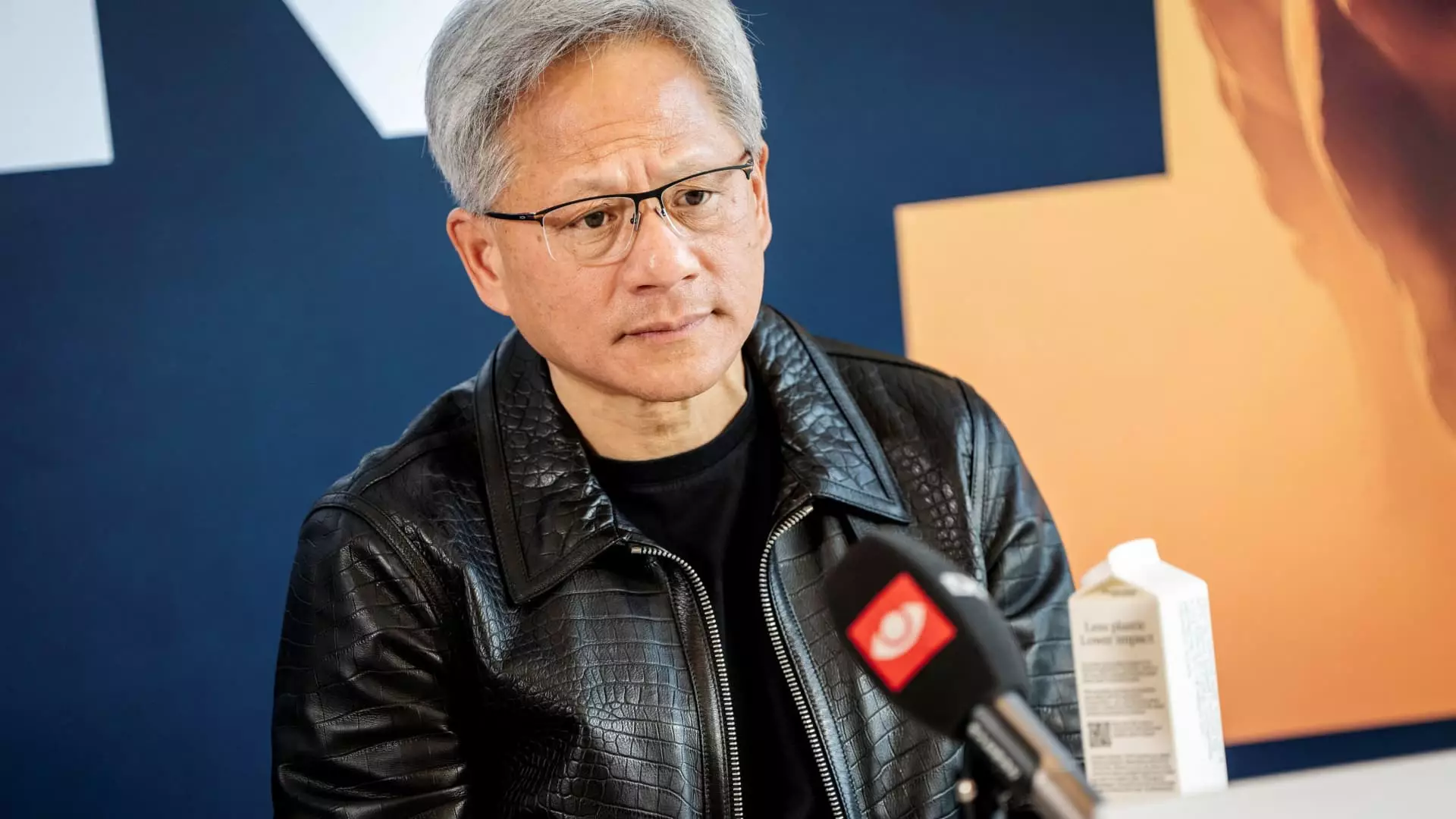Artificial intelligence (AI) continues to be one of the most transformative forces in the technology sector, and Nvidia is at the forefront of this revolution. Despite a landscape filled with burgeoning competition, Nvidia has managed to secure an astounding 80% share of the rapidly expanding artificial intelligence chip market. As the preferred graphics processing unit (GPU) for developing and implementing generative AI applications, the company remains a heavyweight player amidst rising challengers. However, as Nvidia prepares to disclose its third-quarter earnings, several critical factors are worth examining, particularly regarding its future growth trajectory and ongoing challenges.
Investors are keenly awaiting Nvidia’s earnings report scheduled for Wednesday, hoping to glean insights into the company’s ability to maintain its blistering growth rate as the AI boom approaches its third year. HSBC analyst Frank Lee characterized Nvidia’s current position as venturing into “uncharted territory” with a market capitalization reaching $3.5 trillion. In his report, Lee expressed confidence in Nvidia’s growth potential, projecting further upside, especially within its data center sector leading up to 2026. Such assertions are compelling, given the remarkable performance of the company since the launch of AI models like ChatGPT in late 2022, which has substantially boosted its stock value by nearly eightfold.
Nevertheless, the upcoming earnings report is not merely a measurement of past performance but a critical gauge of future potential. A significant focal point will be the demand dynamics surrounding Nvidia’s next-generation chip, Blackwell, which has recently begun shipping to significant clients like Microsoft, Google, and OpenAI. Questions abound regarding not just the quantity of chips sold but also the qualitative aspects, including operational stability and overheating issues linked to the Blackwell systems.
The anticipated growth from Blackwell represents both an opportunity and a potential challenge for Nvidia. While analysts estimate a modest supply of approximately 100,000 Blackwell GPUs for the fourth quarter, market sentiment may hinge upon Nvidia CEO Jensen Huang’s update about demand trends and any technical difficulties facing the new chips. Furthermore, these upcoming revelations will play a pivotal role in shaping investor confidence in the stock.
A critical observation since Nvidia’s last earnings disclosure is that its stock has appreciated by nearly 19%. This remarkable momentum is fantastic but also carries with it a narrative of growing scrutiny. The company’s sales surged by an astonishing 122% in the most recent quarter; however, this figure marks a significant deceleration from its previous quarters, where growth figures soared above 250%. Analysts project Nvidia will report revenues around $33.12 billion, a robust 83% growth year-over-year, yet this slowing growth rate invites questions about sustainability.
A noteworthy trend to examine is Nvidia’s shifting focus towards its data center business, which constituted nearly 88% of quarterly sales, overshadowing its traditional gaming segment. Despite Nvidia’s production of chips for platforms like the Nintendo Switch, gaming revenue is expected to grow only modestly by 6%, illustrating significant competitive pressures in this area. Meanwhile, the automotive segment, responsible for supplying chips for electric vehicles, is starting to gain traction and is predicted to expand by 38%, though it remains a relatively small portion of Nvidia’s overall revenue.
Despite the challenges faced within the gaming and automotive divisions, what truly matters for Nvidia is its burgeoning data center business. Analysts have indicated that this sector is still doubling in annual growth, positioning the company favorably as long as these figures continue to rise.
As Nvidia approaches its third-quarter earnings report, both the company’s current dominance and future prospects are being scrutinized. If the data center growth persists and Blackwell’s market reception proves favorable, Nvidia could continue to thrive even in a competitive environment. However, any missteps or revelation of challenges could shift investor sentiment significantly. As Nvidia navigates through these intricate waters, it remains a critical observer of not only its own trajectory but the larger landscape of the artificial intelligence revolution where innovation and adaptability will dictate long-term success.


Leave a Reply